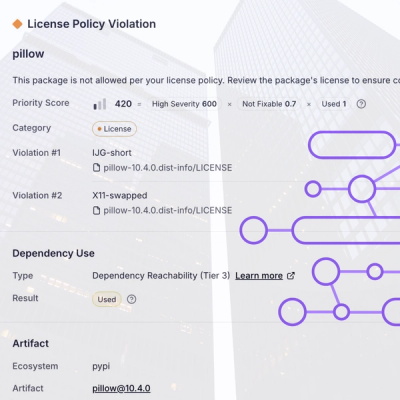
Security News
TC39 Advances 11 Proposals for Math Precision, Binary APIs, and More
TC39 advances 11 JavaScript proposals, with two moving to Stage 4, bringing better math, binary APIs, and more features one step closer to the ECMAScript spec.
react-addons-create-fragment
Advanced tools
Note: This is a legacy React addon, and is no longer maintained.
We don't encourage using it in new code, but it exists for backwards compatibility.
The recommended migration path is to use arrays with explicit keys on individual elements.
Importing
import createFragment from 'react-addons-create-fragment'; // ES6
var createFragment = require('react-addons-create-fragment'); // ES5 with npm
If you prefer a <script> tag, you can get it from React.addons.createFragment with:
<!-- development version -->
<script src="https://unpkg.com/react-addons-create-fragment/react-addons-create-fragment.js"></script>
<!-- production version -->
<script src="https://unpkg.com/react-addons-create-fragment/react-addons-create-fragment.min.js"></script>
In this case, make sure to put the <script> tag after React.
In most cases, you can use the key prop to specify keys on the elements you're returning from render. However, this breaks down in one situation: if you have two sets of children that you need to reorder, there's no way to put a key on each set without adding a wrapper element.
That is, if you have a component such as:
function Swapper(props) {
let children;
if (props.swapped) {
children = [props.rightChildren, props.leftChildren];
} else {
children = [props.leftChildren, props.rightChildren];
}
return <div>{children}</div>;
}
The children will unmount and remount as you change the swapped prop because there aren't any keys marked on the two sets of children.
To solve this problem, you can use the createFragment add-on to give keys to the sets of children.
Array<ReactNode> createFragment(object children)Instead of creating arrays, we write:
import createFragment from 'react-addons-create-fragment';
function Swapper(props) {
let children;
if (props.swapped) {
children = createFragment({
right: props.rightChildren,
left: props.leftChildren
});
} else {
children = createFragment({
left: props.leftChildren,
right: props.rightChildren
});
}
return <div>{children}</div>;
}
The keys of the passed object (that is, left and right) are used as keys for the entire set of children, and the order of the object's keys is used to determine the order of the rendered children. With this change, the two sets of children will be properly reordered in the DOM without unmounting.
The return value of createFragment should be treated as an opaque object; you can use the React.Children helpers to loop through a fragment but should not access it directly. Note also that we're relying on the JavaScript engine preserving object enumeration order here, which is not guaranteed by the spec but is implemented by all major browsers and VMs for objects with non-numeric keys.
15.5.3 (April 7, 2017)
Note: this release has a critical issue and was deprecated. Please update to 15.5.4 or higher.
FAQs
Unknown package
The npm package react-addons-create-fragment receives a total of 123,371 weekly downloads. As such, react-addons-create-fragment popularity was classified as popular.
We found that react-addons-create-fragment demonstrated a not healthy version release cadence and project activity because the last version was released a year ago. It has 5 open source maintainers collaborating on the project.
Did you know?

Socket for GitHub automatically highlights issues in each pull request and monitors the health of all your open source dependencies. Discover the contents of your packages and block harmful activity before you install or update your dependencies.

Security News
TC39 advances 11 JavaScript proposals, with two moving to Stage 4, bringing better math, binary APIs, and more features one step closer to the ECMAScript spec.

Research
/Security News
A flawed sandbox in @nestjs/devtools-integration lets attackers run code on your machine via CSRF, leading to full Remote Code Execution (RCE).

Product
Customize license detection with Socket’s new license overlays: gain control, reduce noise, and handle edge cases with precision.